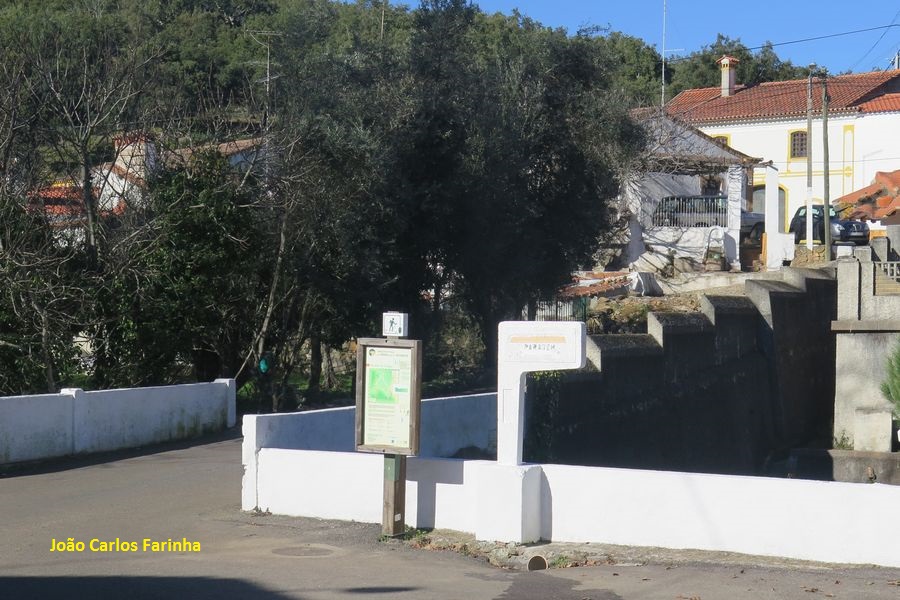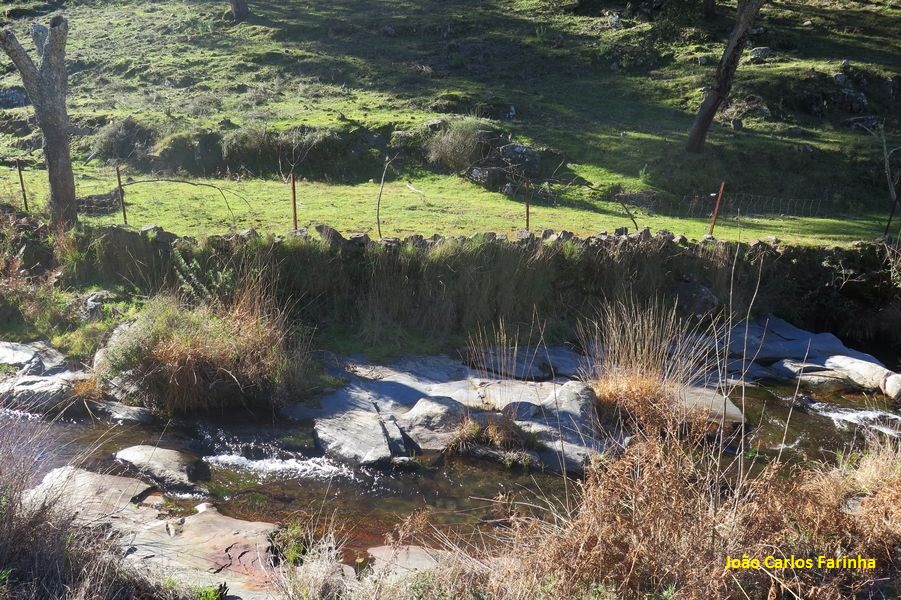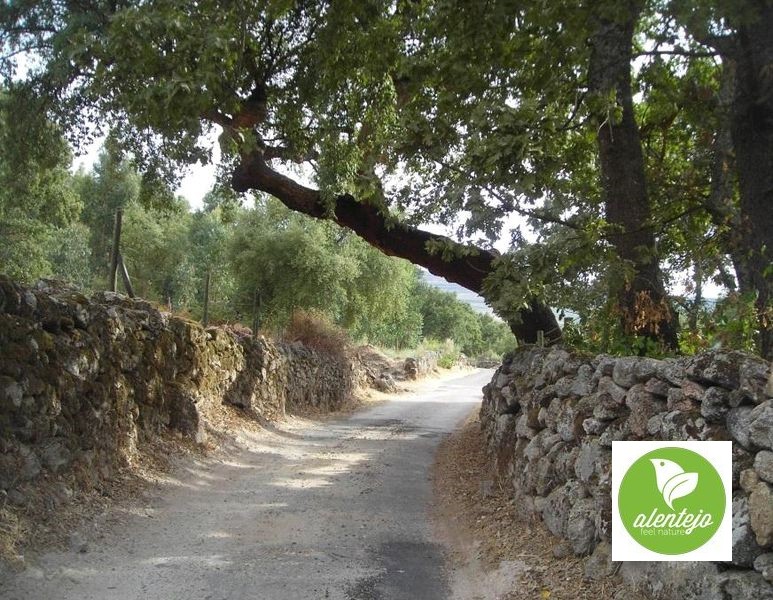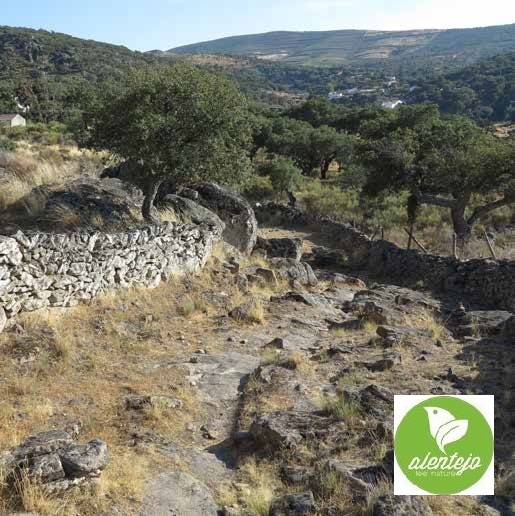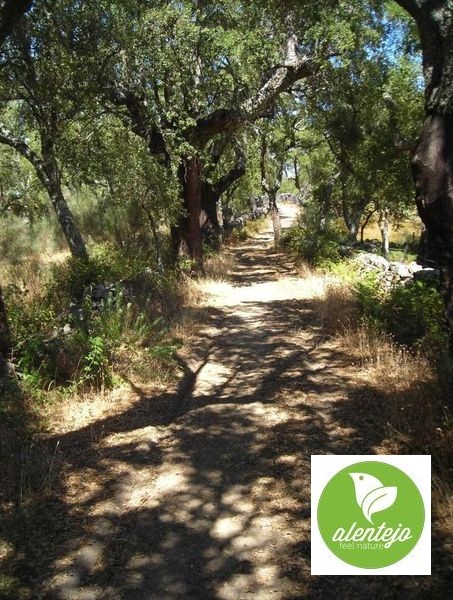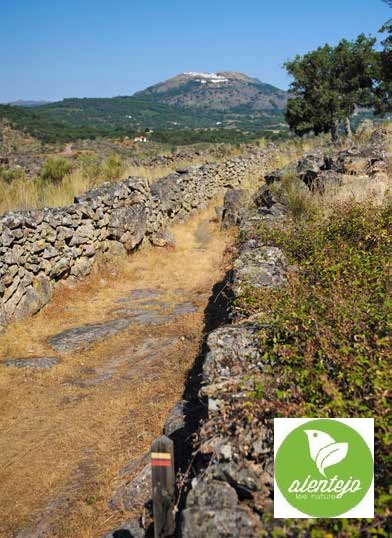PR2 MRV Galegos
Share Image
The walking path begins in the village of Galegos, by the old bus stop in Largo da Ponte. On the granite bed of Galegos’ stream are large cavities (potholes), scoured out by the action of stones which, propelled by water and agitated by currents, gradually wore down and dug out the rocky stream bed. The walk continues in the direction of the border (La Fontañera). On this stretch of the walk, between Galegos and La Fontañera, the Portuguese Sundew (Drosophyllum lusitanicum), a very interesting insect-eating plant, can be found. The walk continues through a gently rolling landscape, towards and across the stream at Galegos and on to the Sever River, a place at once wild and pleasant, with the harshness of granite together with the sound of rippling water and the restful poplars and ash trees along its banks. Ahead, a magnificent view over the valley, including impressive granite blocks of huge size. Looking towards the valley to the right (southeast) there is a dark green patch of chestnut trees which we will pass on the walk. Straight ahead (northeast) there is a threshing floor and a small farm. Returning to Galegos we come again to the stream of the same name next to the tarred road that leads back to the village. NATURE: this walking path passes through hilly granite countryside, offering wild but beautiful landscapes. In the poor soil, the granite massif fills the horizon with giant blocks, faults, fissures, boulders. Impressive cork trees burst out of the crags, in prodigious displays of beauty, balance and strength. Chestnut trees, oaks, olive trees, and pines complement the scenery which, on the banks of Sever River, also offers poplars and ash. It is worth noting the following species: Iberian midwife toad; griffon vulture; Egyptian vulture; and the otter. HERITAGE: Castro da Crença (Iron Age); and Church of S. Sebastião. HANDICRAFT: traditional embroidery with chestnut peel; and basketry in chestnut tree wood. GASTRONOMY: soup of sarapatel; lamb stew; cachafrito of little goat; alhada of dogfish; thin bread with chestnuts. Sweets (Chestnut cake, apple boleima, aramenha pie). Chestnut (Protected Designation of Origin).

-
The walking path begins in the village of Galegos, by the old bus stop in Largo da Ponte. On the granite bed of Galegos’ stream are large cavities (potholes), scoured out by the action of stones which, propelled by water and agitated by currents, gradually wore down and dug out the rocky stream bed. The walk continues in the direction of the border (La Fontañera). On this stretch of the walk, between Galegos and La Fontañera, the Portuguese Sundew (Drosophyllum lusitanicum), a very interesting insect-eating plant, can be found. The walk continues through a gently rolling landscape, towards and across the stream at Galegos and on to the Sever River, a place at once wild and pleasant, with the harshness of granite together with the sound of rippling water and the restful poplars and ash trees along its banks. Ahead, a magnificent view over the valley, including impressive granite blocks of huge size. Looking towards the valley to the right (southeast) there is a dark green patch of chestnut trees which we will pass on the walk. Straight ahead (northeast) there is a threshing floor and a small farm. Returning to Galegos we come again to the stream of the same name next to the tarred road that leads back to the village. NATURE: this walking path passes through hilly granite countryside, offering wild but beautiful landscapes. In the poor soil, the granite massif fills the horizon with giant blocks, faults, fissures, boulders. Impressive cork trees burst out of the crags, in prodigious displays of beauty, balance and strength. Chestnut trees, oaks, olive trees, and pines complement the scenery which, on the banks of Sever River, also offers poplars and ash. It is worth noting the following species: Iberian midwife toad; griffon vulture; Egyptian vulture; and the otter. HERITAGE: Castro da Crença (Iron Age); and Church of S. Sebastião. HANDICRAFT: traditional embroidery with chestnut peel; and basketry in chestnut tree wood. GASTRONOMY: soup of sarapatel; lamb stew; cachafrito of little goat; alhada of dogfish; thin bread with chestnuts. Sweets (Chestnut cake, apple boleima, aramenha pie). Chestnut (Protected Designation of Origin).
-
Alentejo
-
Marvão
-
Serra de S. Mamede Nature Park
Base Characterization
-
PTCON0007 São Mamede
-
CIMAA - Comunidade Intermunicipal do Alto Alentejo
Route Characterization
-
Access to Galegos coming from:
- Marvão (more or less 12 km) - N359, N246-1 and M1088.
- Spain- La Fontañera (more or less 1 km); or by N-521 (more or less 4 km) – N246-1 and M1088.
-
Yes
-
Largo da Ponte, Galegos
-
Largo da Ponte, Galegos
-
12 km
-
All year, but you should avoid Summer.
-
4:30h
-
125 meters
-
Hard
-
Ring road
-
Todos os grupos
Supports in place
-
Panel at the beginning and signs along the way.
Topographic Profile
Before starting stroll through Galegos village and see the church, perhaps from the 17th-18th centuries and built on an older temple. The pillory can be medieval.
Access to Galegos coming from:
- Marvão (more or less 12 km) - N359, N246-1 and M1088.
- Spain- La Fontañera (more or less 1 km); or by N-521 (more or less 4 km) – N246-1 and M1088.









